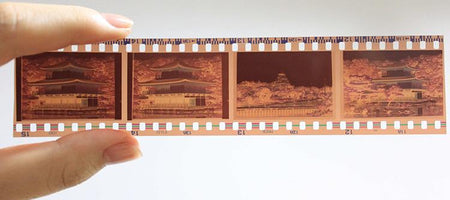Debates about format, resolution, and image quality have long been associated with film, photography, televisions, and the like. It’s an age old picture quality war that’s still waged today with the latest cameras and TV models – 4K, Ultra HD, HDR, OLED, QLED … it’s tough to keep up with all of it.
But one format debate that gets overlooked or hardly discussed among the masses is NTSC vs PAL. So, let’s look at what each of these stands for and what they have to offer consumers.
What is NTSC?
Before we compare NTSC and PAL, let’s look at what each one is. NTSC (National Television System Committee) is a color television broadcast standard used mainly in North America, parts of South America, Japan, South Korea, and some other regions. It was one of the first color television standards developed for analog broadcast.
Key characteristics of NTSC include:
- Frame rate: NTSC broadcasts at 30 frames per second (or more precisely, 29.97 fps), which is tied to the 60 Hz power grid used in regions where NTSC is prevalent.
- Resolution: The standard NTSC resolution is 720x480 pixels.
- Color encoding: NTSC uses a method of color encoding that is sensitive to signal degradation, which can lead to slight color inaccuracies over time. This is sometimes referred to as "Never The Same Color," a playful take on the NTSC acronym due to these color shifts.
-
Aspect ratio: NTSC typically operates with a 4:3 aspect ratio, though widescreen 16:9 became more common in the digital age.
What is PAL?
PAL (Phase Alternating Line) is another color encoding system used in broadcast television, primarily in Europe, Australia, parts of Africa, and Asia. The PAL system is also one of the major analog TV standards, alongside NTSC and SECAM (used in parts of Eastern Europe and Africa).
Key characteristics of the PAL format include:
- Frame rate: PAL has a frame rate of 25 frames per second, making it well-suited to the 50 Hz power grid common in PAL-using countries.
- Resolution: The standard resolution for PAL is 720x576 pixels, which provides a slightly higher picture quality compared to NTSC.
- Color stability: PAL's alternating phase corrects color errors over successive lines, making it more stable in terms of color accuracy compared to NTSC, which can suffer from color drift.
NTSC vs. PAL
What does this all mean? Basically, NTSC is the standard for broadcast in the United States. And it can be best described as region-locking DVD players and televisions in the USA, meaning that devices built for the NTSC standard may not be compatible with video formats like PAL or SECAM, which are used in other regions.
You see, if you’ve ever tried to insert a movie from Europe into an American DVD player, you’re probably familiar with the scrambled, pixelated picture and horrendously flat audio. It’s because that specific DVD was mostly likely made for PAL (or Phase Alternating Line)). The problem is the vast majority of DVD players manufactured in the U.S. aren’t backward compatible with PAL, and vice versa due to the differing electrical components.
It’s why conversion kits have been made to help make backward compatibility more tolerable, but even still, the picture is never as great as it can be compared to using each region’s specific format.
So, let’s dig into the electrical differences of each.
To avoid the endless spree of technical jargon, let’s break it down like this. In the U.S., the electrical power generated for TVs is 60 hertz – that’s 60 fields per second for NTSC broadcast. But, the NTSC system breaks up those 60 fields so that 30 lines of an image appear first, followed by another 30 alternating lines, giving you a rate of 30 frames per second.
Still with us? Good.
In Europe and the countries that use the PAL format, the electrical power generated is 50 hertz – 10 fields less. As a result, the PAL broadcast format only produces 25 frames per second. As you can see, those numbers don’t equal each other, and that 5 frames per second difference can have a big impact on backward compatibility, giving your picture that jerky or slow-motion look that no one wants.
So, NTSC resolution is better than PAL, right? Not so fast.
We’ve already discussed the main difference between the two, but while PAL produces fewer frames per second than NTSC, it actually produces more lines overall. NTSC televisions broadcast 525 lines of resolution, while PAL televisions broadcast 625 lines of resolution.
So, technically speaking, PAL’s 100 additional lines amount to more visual information on your screen and an overall better picture quality due to the higher resolution. NTSC makes up for this line shortage by adding black bars to compensate for the smaller screen aspect, similar to what you see in widescreen (letterbox) formatting. However, PAL’s frame rate is lower (25 fps) compared to NTSC’s (30 fps), which can affect the smoothness of motion in video playback.
However, with that said, most of the specific resolution science behind this debate can’t even be discerned naturally by the human eye. So, whether you’re using NTSC format or a PAL format, both images will look great … just don’t try to interchange them because they’re not backward compatible. Unless terrible resolution and audio is your thing, then by all means, go for it.
Digitize Your PAL Home Movies Today
Digitizing your PAL format tapes is essential for preserving and easily accessing your cherished memories. Over time, analog media like PAL tapes degrade, leading to a loss of image quality, color accuracy, and sound. By converting your PAL videos to digital formats, you ensure that your memories remain intact and can be watched without the need for outdated equipment or clunky conversion kits. Digital files can also be easily stored, edited, and shared with your loved ones.
Digitize your PAL videos today with Southtree for easy viewing.













